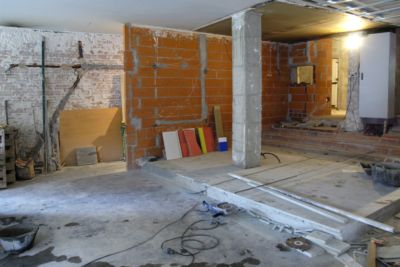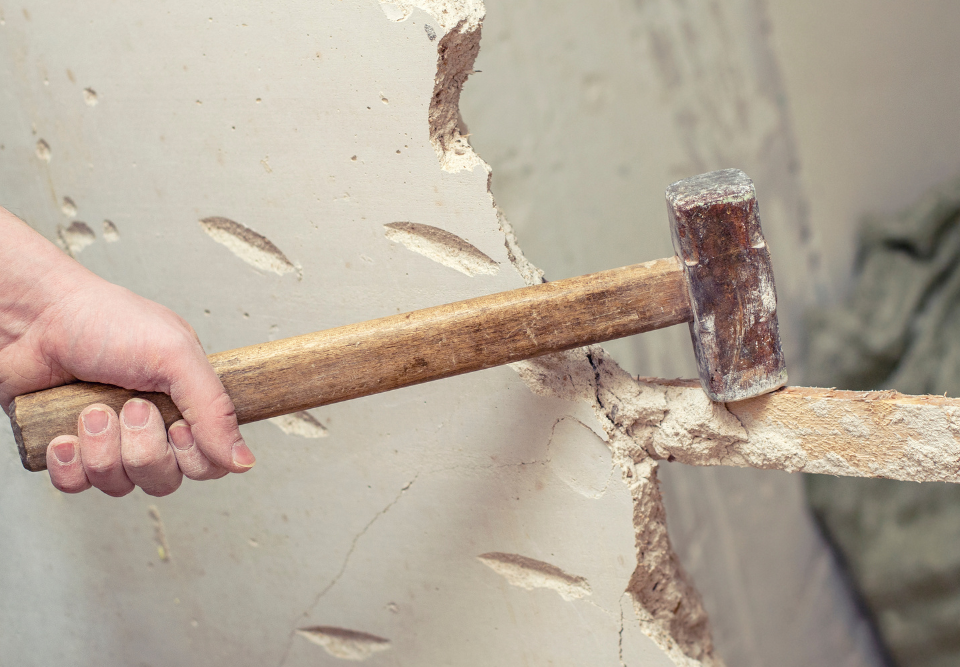
Why Professional Demolition Cleanup Saves You Money
September 11, 2025
Eco-Friendly Junk Removal
September 11, 2025Tips for Handling Demolition Cleanup in Older Homes
Older homes hold character and charm, but behind their walls often lies a maze of unexpected challenges. When renovation plans include demolition, cleanup becomes more than a routine step—it transforms into a critical process requiring patience, planning, and attention to detail. Dust, debris, hazardous materials, and even hidden surprises are common during demolition in aging houses. Managing the aftermath properly not only keeps the project on schedule but also protects the safety of everyone involved.
Handling demolition cleanup in older homes requires more than a broom and trash bags. It demands foresight, protective gear, and often the assistance of professionals who know how to handle waste responsibly. By approaching this stage with strategy and care, homeowners can prevent common pitfalls that delay progress. Cleanup doesn’t just clear space—it ensures the foundation for new improvements is safe, organized, and ready to support the next stage of transformation.
Assessing potential hazards before demolition cleanup
One of the most important first steps in demolition cleanup for older homes is identifying possible hazards. Materials such as asbestos, lead paint, and mold are frequently discovered during the demolition of structures built decades ago. These substances can pose serious health risks if not handled properly. A thorough inspection by trained professionals ensures dangerous materials are spotted before cleanup begins.
Once hazards are identified, you can create a strategy that prioritizes safe removal and disposal. Handling contaminated debris without preparation can lead to costly mistakes and potential health concerns. By starting with an assessment, you set the stage for a safer and smoother cleanup process. Taking the time to recognize hazards not only reduces risks but also ensures that every step of the demolition and cleanup is carried out responsibly. Careful planning before the first piece of debris is moved makes a significant difference.
Using protective equipment during cleanup
Demolition cleanup in older homes is never complete without the right protective gear. Dust, sharp debris, and lingering contaminants are all risks to workers and homeowners. Gloves, goggles, dust masks, and steel-toed boots form the basic line of defense against injuries. In cases where hazardous substances may be present, respirators and disposable suits provide extra protection.
Using the right equipment ensures that the cleanup process doesn’t create lasting health issues. Even simple tasks like sweeping can stir up dust that lingers in the air long after the project is finished. Protective gear allows you to work confidently while minimizing risks. It’s a small investment that prevents larger problems down the road. Cleanup in older homes isn’t just about removing debris; it’s about doing it in a way that safeguards everyone involved, turning a messy job into a controlled and efficient process.
Containing dust and debris during demolition
Older homes often contain layers of materials that produce significant amounts of dust when torn down. Without proper containment, fine particles can spread into every corner of the house. Sealing off work areas with plastic sheeting and using negative air machines helps keep dust localized. Covering vents ensures that heating and cooling systems don’t carry debris into other rooms.
Containing dust doesn’t just make cleanup easier—it also protects your home and health. Simple steps like wetting surfaces lightly before breaking them down can prevent large plumes of dust. Creating barriers and cleaning as you go ensures the mess doesn’t expand. Containment keeps the demolition zone under control, allowing the rest of the house to remain functional during renovations. By prioritizing dust management, you reduce cleanup time and maintain a safer, more livable environment throughout the renovation process.

Sorting materials for disposal and recycling
Not all demolition debris belongs in the same pile. Older homes can produce a mix of materials, including wood, drywall, bricks, and metal. Sorting these items as you go makes the final disposal stage more manageable. Metals and clean wood can often be recycled, while hazardous materials require separate handling.
By organizing debris into categories, you save time during transport and reduce disposal costs. Recycling also lessens the environmental impact of your renovation by keeping reusable materials out of landfills. Sorting might feel like an extra step, but it ultimately streamlines the process. With designated piles for each type of debris, cleanup becomes structured rather than overwhelming. Thoughtful sorting ensures your demolition project contributes to sustainability while staying efficient, making cleanup less of a burden and more of a responsible approach to renovation waste.
Planning efficient debris removal
Demolition cleanup becomes chaotic without a clear removal plan. Large piles of debris not only clutter the space but also slow down the progress of the renovation. Renting a dumpster or scheduling a junk removal service in advance helps keep the project moving forward. Planning where debris will be staged before disposal also prevents repeated disruptions.
Efficiency is about more than speed—it’s about maintaining order. By coordinating debris removal as part of the overall project timeline, you avoid unnecessary delays. Having a removal strategy ensures each load of waste is taken out promptly, leaving work areas clear for construction. Whether you’re working room by room or tackling an entire house, organized debris removal creates a smoother process and a safer environment for everyone involved.
Recognizing the value of professional help
While DIY demolition cleanup may sound appealing, the reality is that older homes often contain hidden complexities. Heavy materials, potential hazards, and sheer volume can quickly overwhelm homeowners. Professional junk removal services bring expertise and efficiency, ensuring that cleanup is handled safely and correctly.
Hiring professionals also eliminates the burden of navigating local disposal regulations on your own. They know how to separate recyclable materials, handle hazardous substances, and transport debris efficiently. Professionals streamline the process, saving time and energy so you can focus on the exciting aspects of your renovation. Recognizing when to call for help is not a weakness—it’s a smart choice that prevents costly mistakes and keeps the project on schedule. Professional cleanup transforms demolition from an exhausting task into a manageable step toward your home’s transformation.
Protecting your home’s structure during cleanup
Demolition doesn’t always mean tearing down walls recklessly. In older homes, it’s especially important to protect structural elements while cleaning up debris. Accidentally damaging beams, supports, or plumbing can add unexpected costs to your renovation. Using caution when removing materials ensures that the home’s foundation remains intact.
During cleanup, avoid dragging heavy debris across floors or knocking against walls unnecessarily. Covering surfaces with protective materials helps prevent scratches and dents. By treating your home carefully during cleanup, you preserve its integrity for future improvements. Protecting the structure isn’t just about saving money—it’s about respecting the unique character of an older home while preparing it for upgrades. Careful cleanup ensures you’re not undoing the very charm that made the house worth renovating in the first place.
Scheduling cleanup in stages
Tackling an entire demolition cleanup at once can feel overwhelming. Breaking it into stages keeps the process manageable and organized. Start with one room or area at a time, completing both demolition and cleanup before moving forward. This step-by-step approach prevents debris from piling up across the entire house.
Staged cleanup also allows you to adjust strategies as you go. If one method of dust control or debris sorting isn’t working, you can refine the process for the next stage. By dividing the project into smaller sections, you maintain momentum without burnout. Scheduling cleanup in stages provides a sense of progress, making the overall task feel less daunting. This methodical approach ensures that demolition doesn’t spiral into chaos but instead moves forward with structure and confidence.
Understanding local disposal regulations
Older homes may produce materials that can’t be disposed of in standard trash collection. Regulations often govern the disposal of items like asbestos, lead paint, and large construction debris. Understanding these rules ahead of time prevents fines and ensures your project stays on track.
Researching local guidelines or working with a professional service that already knows the regulations makes cleanup far less stressful. Some areas even offer recycling programs for construction waste, which can reduce disposal costs. Knowing where and how to dispose of materials responsibly ensures compliance and peace of mind. Local regulations aren’t just bureaucratic red tape—they’re designed to keep communities safe and environmentally conscious. Taking them seriously helps ensure your demolition cleanup aligns with responsible practices and avoids unnecessary setbacks.
Maintaining safety throughout the project
Safety should remain the priority from the first hammer swing to the final bag of debris. Cleanup in older homes presents ongoing risks, from exposed nails to heavy lifting. Keeping walkways clear, using proper lifting techniques, and maintaining protective equipment are essential for minimizing accidents.
Checking the worksite regularly for hazards also keeps the environment safe for both workers and residents. Cleanup should never feel rushed at the expense of safety. Prioritizing safety creates a work environment where progress continues steadily without interruptions from injuries or accidents. A safe cleanup process not only protects individuals but also ensures the renovation timeline stays intact. By committing to safety at every stage, you turn demolition cleanup into a structured, controlled process rather than a hazardous afterthought.
Conclusion
Demolition cleanup in older homes is a complex but essential step in any renovation. From assessing hazards and wearing protective gear to recycling materials and following disposal regulations, every detail plays a role in ensuring the process is safe, efficient, and responsible. Older houses carry history, but that history sometimes comes with extra challenges. By handling cleanup with care and planning, homeowners can preserve what’s valuable while removing what’s no longer needed.
North Bay Junk Removal, located in Santa Rosa, CA, provides expert junk removal services tailored to these unique challenges. Their team understands the complexities of older homes and offers safe, efficient cleanup solutions that respect both structure and environment. With a focus on eco-friendly practices, they ensure that debris is disposed of responsibly and on schedule. For dependable assistance, call 707-478-6817 today. Choosing North Bay Junk Removal means choosing reliable, professional support for your next renovation project.




